Clothing, cars, watches and headphones powered by solar energy feature in this roundup of 10 products that are harnessing the power of the sun as part of our Solar Revolution series.
Solar power captured by means of photovoltaic panels or solar electricity cells is becoming a more widespread way to power all manner of electronic devices.
Often incorporated into buildings, as photovoltaic panels become smaller, lighter and more efficient they are being increasingly used by designers as a renewable source of energy.
Below are 10 design projects that showcase the variety of ways solar power can be used:

RPT-02 SOL by Adidas and Zound Industries
Sportswear brand Adidas and speaker brand Zound Industries created wireless headphones that can be charged using both sunshine and artificial light.
Named RPT-02 SOL, the wireless headphones feature a headband that is constructed from a solar cell fabric named Powerfoyle that can convert sunlight and artificial light into electricity.
Find out more about RPT-02 SOL ›

The Solar Blanket by Mireille Steinhage
Central Saint Martins Material Futures graduate Mireille Steinhage made this solar-powered blanket from conductive yarn. The product was developed as part of a project that explored ways in which to make renewable energy products more accessible and affordable.
The blanket comes with a solar panel that attaches to a power bank and supplies energy to the blanket. Conductive yarn is used to generate heat across the blanket which is constructed using a polyester composition.
Find out more about The Solar Blanket ›
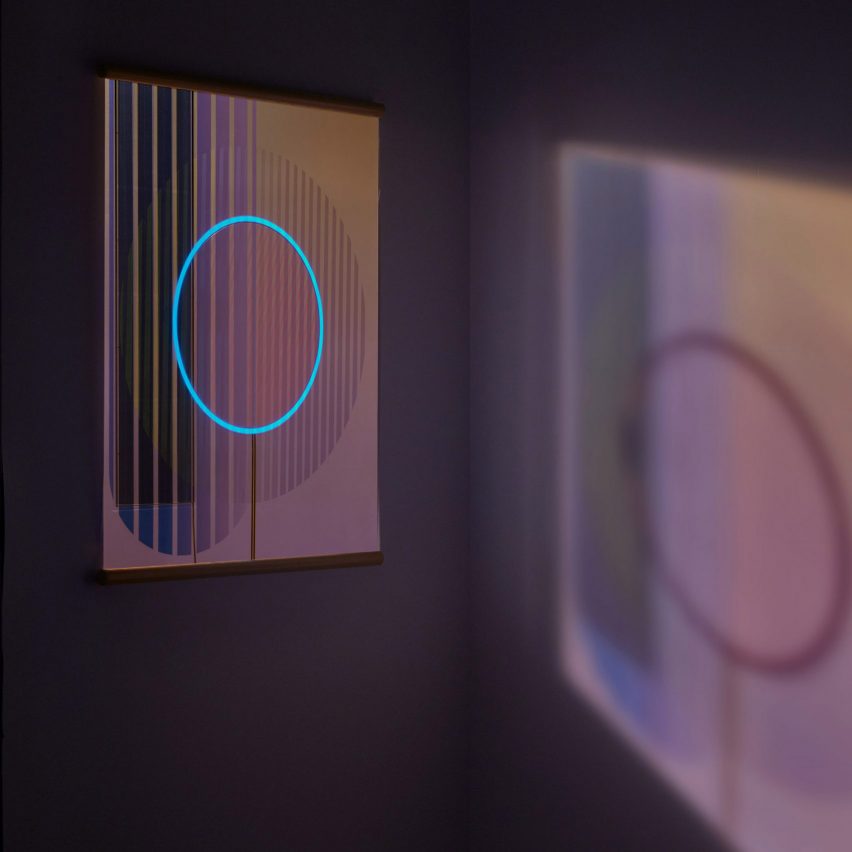
Ra by Marja van Aubel
Dutch designer Marjan van Aubel arranged photovoltaic cells into geometric patterns to create a glowing, tapestry-like panel that was designed to be hung in a window.
Titled Ra, the artwork is one millimetre thick and comes to life at night. Once dark, a ring of electroluminescent paper embedded in the piece will begin to glow as a result of energy captured by the photovoltaic cells throughout the day.
Find out more about Ra ›
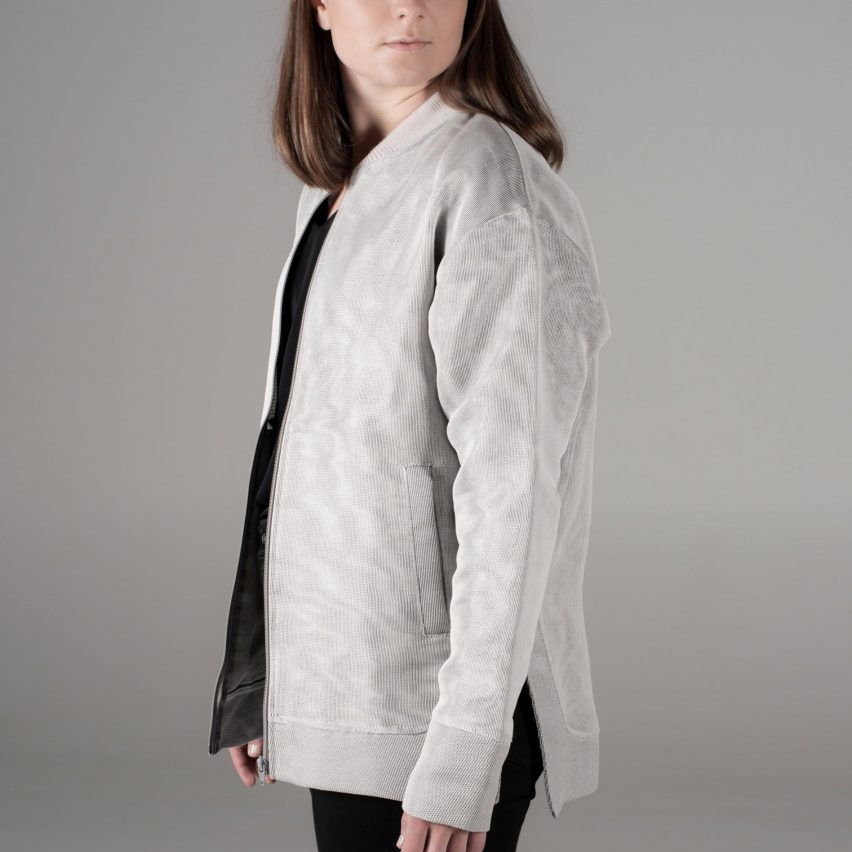
Sun-Powered Textiles by Aalto University
Design and physics researchers at Aalto University in Finland have developed clothing with concealed solar panels that provide users with a means to charge and power handheld electric devices without portable power banks.
A solar cell system was concealed beneath a textile layer within the jacket, which was amended so that enough light could pass through the fabric to power the wearable power bank. The development team hopes that the innovation could be applied to work and sportswear.
Find out more about Sun-Powered Textiles ›

Solartab C by Solartab
Solartab C is a portable charger that uses a photovoltaic panel to power phones, laptops and other handheld devices. Launched in 2017, the device was said to be the first of its kind to feature a USB-C connection and can quickly charge electronic devices.
The device was designed as a greener alternative to traditional chargers and has waterproof qualities as well as including a built-in cover that doubles as a stand.
Find out more about Solartab C ›

Solar-powered windbreaker by Pauline van Dongen
Dutch fashion designer Pauline van Dongen created a technical windbreaker with integrated solar panels that is able to charge handheld electronic devices.
Three flexible solar panels were incorporated across the face of the jacket in order to allow its users to still wear backpacks without obstructing the panels’ energy collection. The jacket is fitted with a power bank that stores energy collected throughout the day and also has water-resistant properties.
Find out more about Pauline van Dongen ›
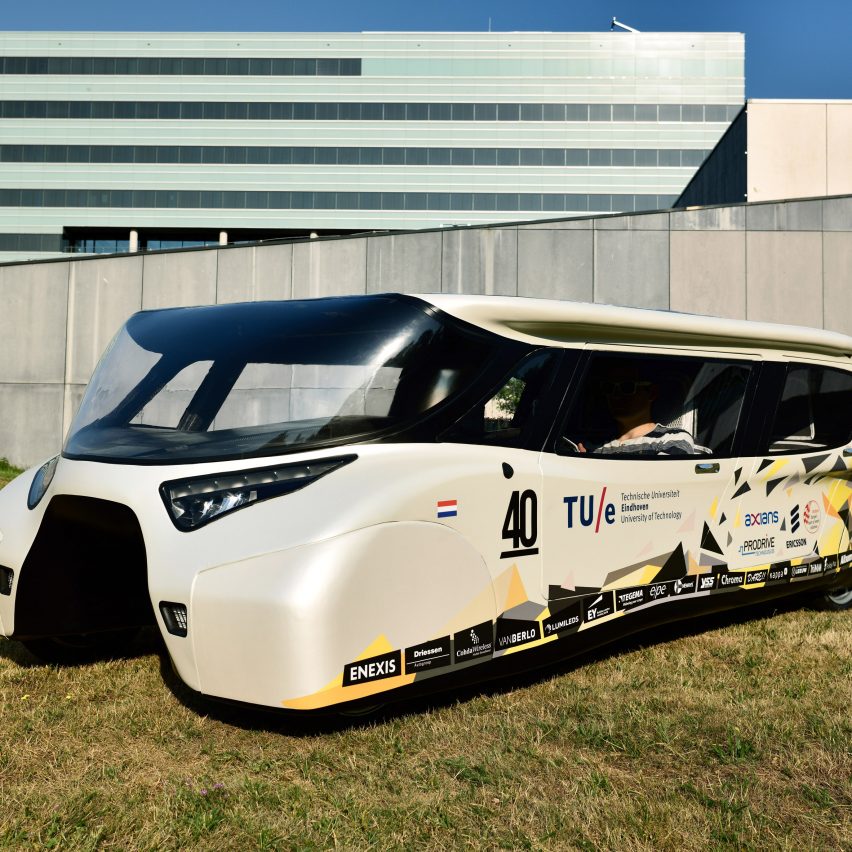
Stella Lux by Eindhoven University of Technology students
Stella Lux is a wedge-shaped car with solar panels fitted across its sloping roof and rear. As a result of its solar panel roof, the car can run for 1,000 kilometres (621 miles) on a single charge while carrying four people.
The family car was designed and built by Eindhoven University of Technology students and generates more energy than it uses, which can then be returned to the power grid.
Find out more about Stella Lux ›

Solution-01 watch collection by Matte Works
Watch brand Matte Works created a solar-powered watch that aims to integrate solar energy into its users’ everyday lives.
Named Solution-01, the watch comprises a solar cell beneath its dial that converts light into electrical energy. Energy is stored within the watch’s rechargeable battery, which reduces the need for disposable batteries.
Find out more about Solution-01 watch collection ›
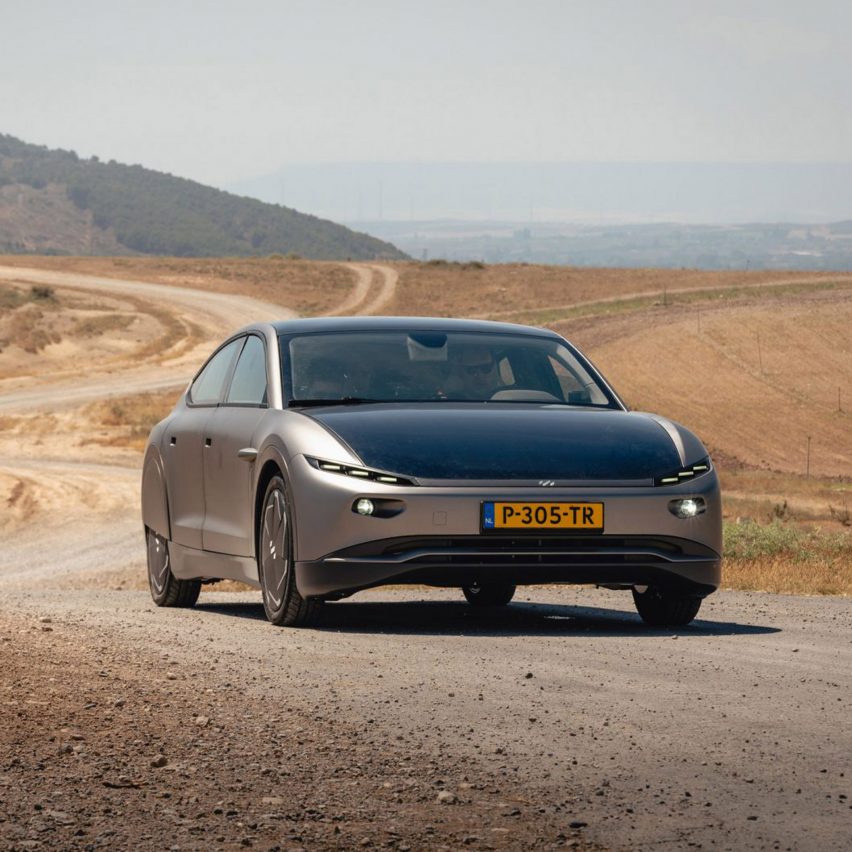
Lightyear 0 by Lightyear
Dutch startup Lightyear developed the “world’s first production-ready” solar-powered car. Lightyear 0 is a five-passenger car that is fitted with five square metres of curved solar panels across its roof, bonnet and tailgate.
The solar panel integration will convert solar energy into electric power that can add up to 70 kilometres (44 miles) per day onto the car’s 388-mile range from traditional electric charging.
Find out more about Lightyear 0 ›
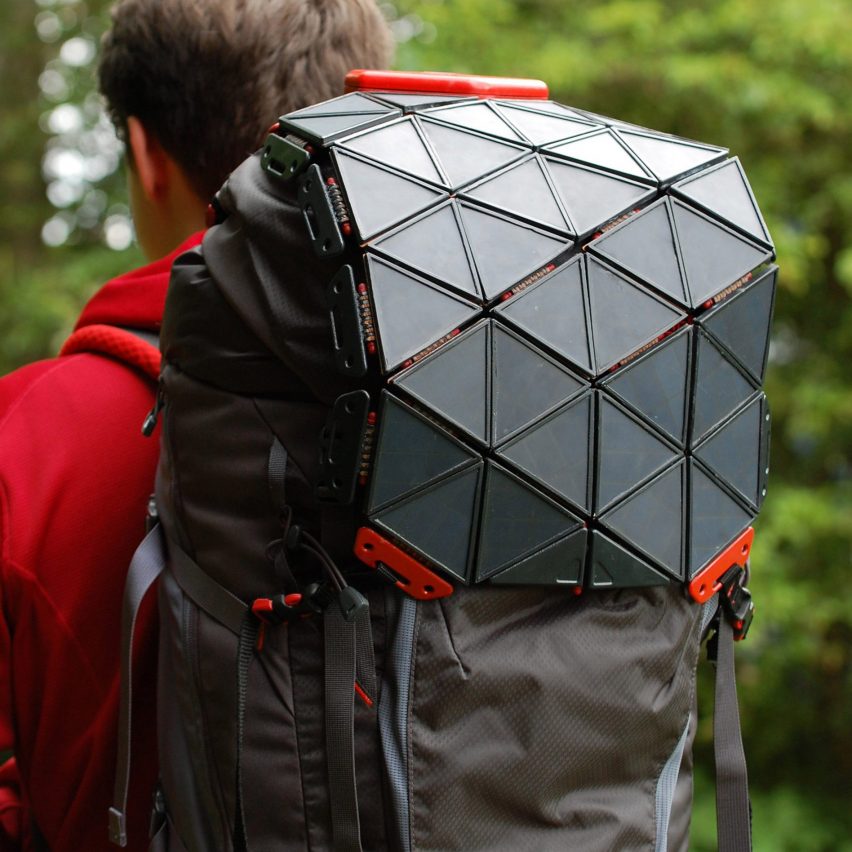
SunUp by Bradley Brister
Rigid and flexible solar panels were combined to create SunUp, which is a product for outdoor use that can be placed over a backpack and other surfaces such as the top of a canoe.
SunUp was created by designer Bradley Brister and is comprised of a collection of polycrystalline solar panels that are adjoined to each other by flexible joints. The product has a 4,000 milliamp Hour (mAh) battery that can charge and power electronics within 12 hours.
Find out more about SunUp ›

Solar Revolution
This article is part of Dezeen’s Solar Revolution series, which explores the varied and exciting possible uses of solar energy and how humans can fully harness the incredible power of the sun.

